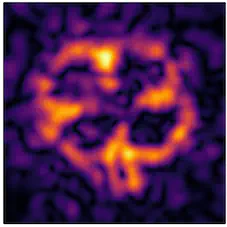Fluid-coupled mechanical waveguides for ultrasonic sensing
 Thesis by J. Freitag
Thesis by J. FreitagAbstract
Transit-time ultrasonic flow meters measure the fluid flow rate through a pipe by exploiting the non-reciprocity due to flow. Robust operation in a wide temperature range from 0°C to 100°C is, thereby, a major practical challenge. A second difficulty arises when conveniently insonifying the pipe’s interior from the outside, in which case the pipe wall acts as a mechanical waveguide. The interaction with the fluid medium results in quasi-guided (leaky and trapped) waves in the sense that their energy is no longer strictly confined within the pipe wall – an effect that is desired in this context. These quasi-guided waves are described by an intricate nonlinear eigenvalue problem. From a theoretical point of view, I will outline a procedure to reliably obtain the full set of solutions. Although the obtained waves are very convenient conceptually, their physical nature is – to date – not fully understood. From a more practical point of view, I will present how these waves can be used to conveniently model transit-time ultrasonic flow sensors, thereby including the effect of temperature. Compared to conventional meters, we find that the time of flight of guided wave based sensors exhibits a decreased cross-sensitivity to temperature. This is a consequence of the temperature-dependent radiation angle of leaky waves, which tends to compensate corresponding changes of the fluid wave speed. Finally, I will give an overview of accompanying projects: Schlieren photography of ultrasound, electromagnetic-acoustic transducers for waveguide excitation, a dip-stick sensor for fluid characterization and ultrasonic holography.
75005 Paris